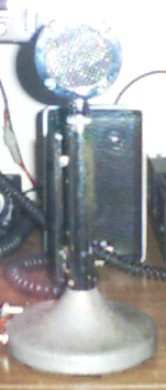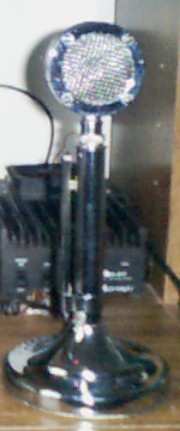

Astatic D-104


This is Astatic's popular model D-104 Microphone. This microphone model quickly earned the reputation as the "King of the Airwaves" by the the local CB'ers during the mid 70's, due mostly to its loud and bright presence. The original model featured a removable crystal mike "head", and a base stand with a grip to talk keybar, and a sliding transmit lock ring. This mic was offered in several different versions over the years, including the original un-amplified high impedance G-stand, and the later un-amplified UG-8 stand, as well as the pre-amplified TUG-8 stand. The UG-8 family supported relay and electronic switching 4 wire configurations. In later years, the product line expanded to include the TUP-9, which supported a dual PTT mechanism which could be activated by either a push bar or the original grip bar. It also included 6 wire switching support. The TUP-9 sported a chrome head and shaft, and a black base. A "deluxe" version of the TUP-9 was offered with an all chrome base, and with an engraved eagle on the back of the head. This model was known as the "Silver Eagle". There was also a gold version offered, aptly named the "Golden Eagle".
Because of the need for ground isolation in a 6 wire switching scheme, the newer mikes were more prone to R.F. feedback (Most commonly known as "squealing"), with some radios, and some modifications needed to be made to restore grounding to the mic body, in order to reduce or eliminate the problem in applications where the radio did not need ground isolation (which was the great majority of cases).
The un-amplified D104 was offered as standard equipment on a few radios, most notably the Tram D-201. The high impedence, un-amplified D104 also mated well with a number of tube rigs, and hybrid rigs like the Hy-Gain 623. But by far, the most popular version in the 1970's was the TUG-8 pre-amplified model, which worked well with the low impedance solid state rigs as well as tube radios.
Pictured on the left, is my original TUG-8 model circa 1974. It's held up fairly well over the years, with the exception of some cosmetic blemishes like pitting of the stand and shaft. Sometime in the mid 70's, I added a "birdie" to the mic (which still works!). On the right is a newer (1985) Silver Eagle. Both mics work well in their current applications.